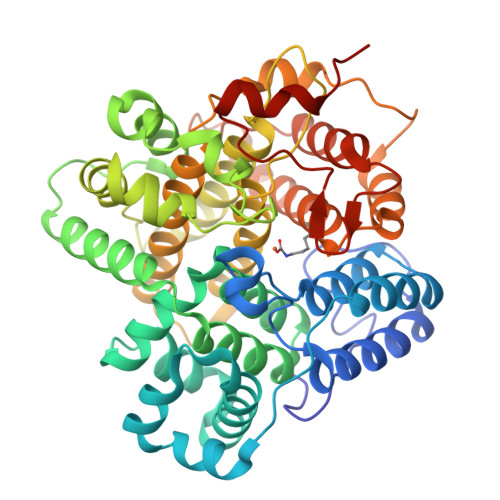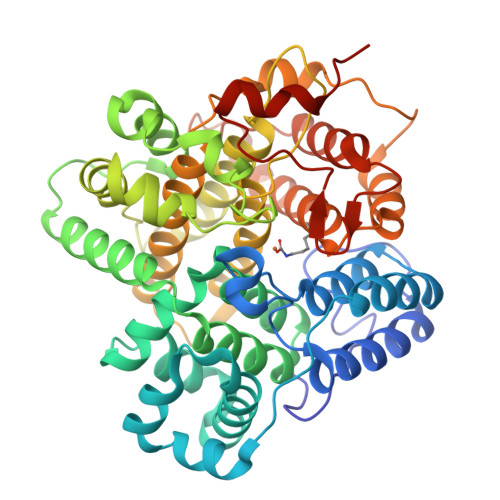Substrate specificity of a branch of aromatic dioxygenases determined by three distinct motifs.
Cui, C., Yang, L.J., Liu, Z.W., Shu, X., Zhang, W.W., Gao, Y., Wang, Y.X., Wang, T., Chen, C.C., Guo, R.T., Gao, S.S.(2024) Nat Commun 15: 7682-7682
- PubMed: 39227380
- DOI: https://doi.org/10.1038/s41467-024-52101-2
- Primary Citation of Related Structures:
8Z4Q, 8Z4R, 8Z4S - PubMed Abstract:
The inversion of substrate size specificity is an evolutionary roadblock for proteins. The Duf4243 dioxygenases GedK and BTG13 are known to catalyze the aromatic cleavage of bulky tricyclic hydroquinone. In this study, we discover a Duf4243 dioxygenase PaD that favors small monocyclic hydroquinones from the penicillic-acid biosynthetic pathway. Sequence alignments between PaD and GedK and BTG13 suggest PaD has three additional motifs, namely motifs 1-3, distributed at different positions in the protein sequence. X-ray crystal structures of PaD with the substrate at high resolution show motifs 1-3 determine three loops (loops 1-3). Most intriguing, loops 1-3 stack together at the top of the pocket, creating a lid-like tertiary structure with a narrow channel and a clearly constricted opening. This drastically changes the substrate specificity by determining the entry and binding of much smaller substrates. Further genome mining suggests Duf4243 dioxygenases with motifs 1-3 belong to an evolutionary branch that is extensively involved in the biosynthesis of natural products and has the ability to degrade diverse monocyclic hydroquinone pollutants. This study showcases how natural enzymes alter the substrate specificity fundamentally by incorporating new small motifs, with a fixed overall scaffold-architecture. It will also offer a theoretical foundation for the engineering of substrate specificity in enzymes and act as a guide for the identification of aromatic dioxygenases with distinct substrate specificities.
Organizational Affiliation:
Tianjin Institute of Industrial Biotechnology, Chinese Academy of Sciences, Tianjin, China.


















